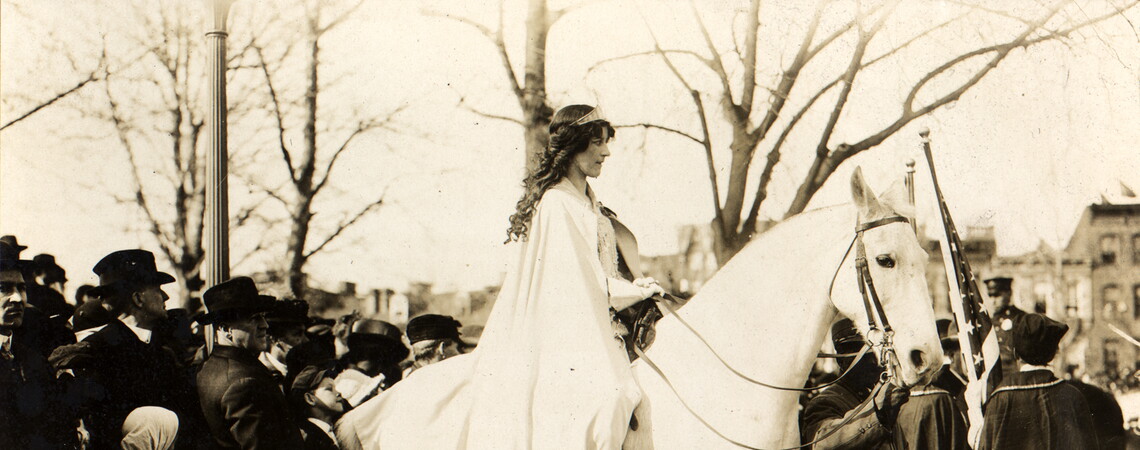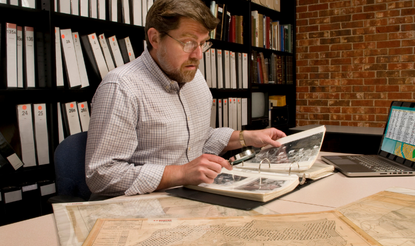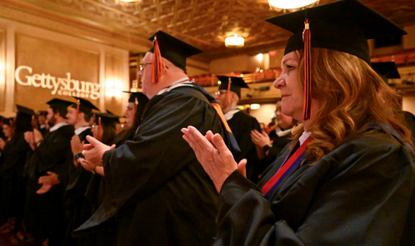The Seneca Falls Convention: Setting the National Stage for Women’s Suffrage
by Judith Wellman
On July 19–20, 1848, about 300 people met for two hot days and candlelit evenings in the Wesleyan Chapel in Seneca Falls, New York, in the first formal women’s rights convention ever held in the United States. Sixty-eight women (supported by thirty-two men who signed a separate list "in favor of the movement") declared:
We hold these truths to be self-evident, that all men and women are created equal, that they are endowed by their Creator with certain inalienable rights, that among these are life, liberty, and the pursuit of happiness; that to secure these rights governments are instituted, deriving their just powers from the consent of the governed.
Sound familiar? It should, for these women’s rights advocates patterned their document directly on the US Declaration of Independence.
Although the convention became best known for its demand for women’s right to vote, the Declaration of Sentiments covered a wide agenda, asserting that women should have equality in every area of life: politics, the family, education, jobs, religion, and morals. "In view of this entire disfranchisement of one-half the people of this country," the signers concluded:
their social and religious degradation,— in view of the unjust laws above mentioned, and because women do feel themselves aggrieved, oppressed, and fraudulently deprived of their most sacred rights, we insist that they have immediate admission to all the rights and privileges which belong to them as citizens of these United States.
As the first women’s rights convention, Seneca Falls initiated the organized women’s rights movement in the United States. Philosophically, the Seneca Falls Declaration of Sentiments tied women’s rights to the country’s natural-rights tradition, incorporating widespread grassroots support for women’s rights into a coherent intellectual framework that challenged Americans everywhere to include women in the great American democratic experiment.
Until recently, historians have told the story of Seneca Falls primarily as part of the biography of Elizabeth Cady Stanton, the convention’s main organizer. But recent scholarship has placed Stanton—and the convention—in the larger context of her own time. In the early decades following the American Revolution, several reformers suggested that women were equal in intellect and abilities to men. By the 1830s, pockets of reformers, influenced by late eighteenth-century republican ideals and egalitarian Christian values, argued for a woman’s right to speak out on moral and political issues. In the 1830s and early 1840s, these local groups spoke out both in favor of abolitionism and legal reform, and these two movements provided the seedbed—or even a dress rehearsal—for the women’s rights movement of the late 1840s.
Local groups took their cues from key national leaders. William Lloyd Garrison, who learned much from Lucretia Mott, became a strong supporter of women’s rights. But abolitionism did not create women’s rights arguments; advocates of these rights may have gained allies and learned strategies through their abolitionist connections, but they brought their women’s rights ideals with them into that movement. In her influential Letters on the Equality of the Sexes and the Condition of Woman, Sarah Grimké declared that "whatever is morally right for a man to do, is morally right for a woman to do." Her sister and fellow-abolitionist, Angelina Grimké asked, "Are we aliens because we are women? Are we bereft of citizenship because we are themothers, wives, and daughters of a mighty people?"[1] The Grimké sisters were not the only women’s rights advocates to speak out clearly in the late 1830s and early 1840s. Lucy Stone, in particular, began to devote much of her lecturing to women’s rights. Abby Kelley specifically organized women’s antislavery fairs, and the ones held in western New York became immediate precursors to the Seneca Falls convention.
These pioneers of women’s rights—drawn from Quaker, Congregationalist, and Methodist backgrounds—provided support for the emerging formal women’s rights movement in the 1840s. In addition to highlighting the role of these pioneers, recent research has brought to light and elaborated on the roles of others whose work was most important after Seneca Falls, including Martha Wright, Sojourner Truth, Frances E. W. Harper, Susan B. Anthony, Matilda Joslyn Gage, and others whose work was most important after Seneca Falls.
The convention was not the first time that women’s rights advocates legitimated their demands by an appeal to the Declaration of Independence. Legal reformers, too, using the Declaration of Independence as a model for women’s rights, paved the road for the formal women’s rights movement that emerged at Seneca Falls. In debates about married women’s property rights at the 1846 New York State constitutional convention, supporters referred to the promise of the Declaration. These women were not alone. A pamphlet, probably authored by Judge John Fine of St. Lawrence County, explicitly used the Declaration of Independence to argue:
THAT ALL ARE CREATED FREE AND EQUAL; THAT THEY ARE ENDOWED BY THEIR CREATOR WITH CERTAIN UNALIENABLE RIGHTS. . . . is freedom’s golden rule. . . . None should ever be allowed to restrict its universality. Women, as well as men, are entitled to the full enjoyment of its practical blessings.[2]
And, in April 1848, forty-four married women in western New York wrote sarcastically to the New York State legislature that:
your Declaration of Independence declares, that governments derive their just powers from the consent of the governed. And as women have never consented to, been represented in, or recognized by this government, it is evident that in justice no allegiance can be claimed from them. . . . Our numerous and yearly petitions for this most desirable object having been disregarded, we now ask your august body, to abolish all laws which hold married women more accountable for their acts than infants, idiots, and lunatics.[3]
Perhaps shamed by such rhetoric, New York State passed its first married women’s property act in April 1848.
But it was the Seneca Falls convention, the brainchild of Elizabeth Cady Stanton and Lucretia Mott, that brought national attention to the issue of women’s rights. The two women had met in London where the newlywed Stanton and the Quaker minister Mott were attending the World Anti-Slavery Convention. When the convention decided to exclude all the American women delegates on the basis of sex, Stanton and Mott decided "to hold a convention as soon as we returned home, and form a society to advocate the rights of women."[4] Although it took eight years to put their plans into action, the result was the Seneca Falls women’s rights convention of 1848.
This convention, hurriedly organized and attended primarily by people from the immediate area, touched off a major national debate. Newspapers across the country picked up the story. Press reaction to the convention varied widely. One editor thought it was "a most insane and ludicrous farce." The Lowell Courier feared women’s equality because "the lords must wash the dishes, scour up, be put to the tub, handle the broom, darn stockings." Some editors, however, praised the meeting. The St. Louis Daily Reveille declared that "the flag of independence has been hoisted for the second time on this side of the Atlantic." The editor of the Herkimer Freeman in upstate New York hailed women’s rights as "a great jubilee of the nation."
Horace Greeley, editor of the New York Tribune, the most influential newspaper in the nation, probably reflected the attitude of many people. Although Greeley clearly felt uncomfortable with the idea of equal rights for women, he recognized the powerful logic inherent in the Declaration of Sentiments. If Americans really believed in the idea that "all men are created equal," he argued, they must endorse even the right of women to vote:
When a sincere republican is asked to say in sober earnest what adequate reason he can give, for refusing the demand of women to an equal participation with men in political rights, he must answer, None at all. However unwise and mistaken the demand, it is but the assertion of a natural right, and such must be conceded.[5]
Elizabeth Cady Stanton, never one to be modest, called the women’s movement the "greatest rebellion the world has ever seen." Historian Ellen DuBois has argued that the women’s movement, along with the civil rights and labor movements, formed one of the three most significant movements for human rights in US history. The ideals expressed in the Declaration of Sentiments—that "all men and women are created equal"—spoke powerfully to Americans and people around the world because they reflected universal ideals of human equality. Such ideals belonged not only to Elizabeth Cady Stanton or to one upstate New York village. They belonged to Americans everywhere. Ultimately, they belonged to the world.
[1] Sarah Grimké, Letters on the Equality of the Sexes and the Condition of Woman (Boston: Isaac Knapp, 1838). Reprinted in Larry Ceplair, ed., The Public Years of Sarah and Angelina Grimké, Selected Writings, 1835–1839 (New York: Columbia University Press, 1989), 246; Angelina Grimké, Appeal to the Women of the Nominally Free States (Boston: Isaac Knapp, 1838), 19.
[2] [John Fine], "Lecture Delivered before the Ogdensburgh Lyceum, on the Political Rights of Women" (Ogdensburgh, NY: Tyler and James, n.d.), 2–3.
[3] New York Assembly Documents, March 15, 1848, no. 129, 1–2.
[4] Proceedings of the Antislavery Convention of American Women (New York: William S. Dorr, 1837), 61.
[5] Notes from the Tribune taken by Alma Lutz, "Greeley," Alma Lutz Papers, Vassar College.
Judith Wellman is the director of Historical New York Research Associates, professor emerita of history at SUNY Oswego, and former park historian at the Women’s Rights National Historical Park in Seneca Falls, NY. She is the author of The Road to Seneca Falls: Elizabeth Cady Stanton and the First Woman’s Rights Convention (2004) and Grassroots Reform in the Burned-over District of Upstate New York: Religion, Abolitionism, and Democracy (2000).



